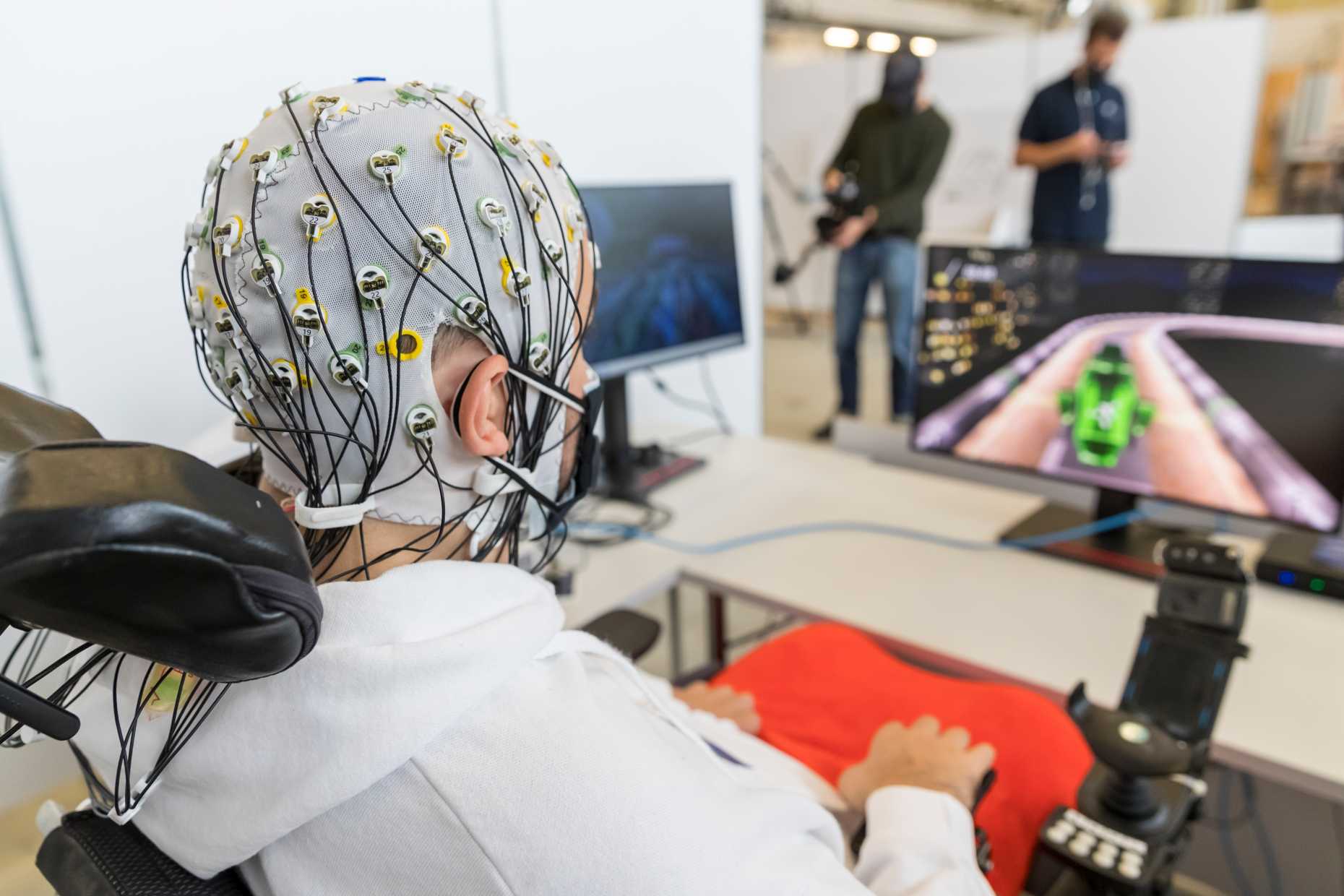Long-term brain computer interface training
How can long-term brain computer interface training be improved for real-time application? Scientists from Future Health Technologies and Nanyang Technological University, Singapore, share their design considerations.

Brain Computer Interface (BCI) technology can uncover the neural mechanisms underlying various tasks and translate them into commands to control a device.
Although BCI has mostly been applied in lab settings, the goal of Future Health Technologies (FHT) scientists was to train a tetraplegic participant over several months to succeed in a real-time application such as the CYBATHLON BCI race. In November 2020, a team of scientists from ETH Zurich and Nanyang Technological University (NTU), led by Dr Rea Lehner Prof. Nicole Wenderoth, and Prof. Cuntai Guan, and the CYBATHLON pilot Samuel Kunz, participated in CYBATHLON 2020 under the BCI category.
The researchers developed a non-invasive neuroimaging technology (i.e., electroencephalography) to measure the brain activity of the participant while the participant imagined different movement tasks. A machine learning algorithm (i.e., Support Vector Machine classification of Filter Bank Common Spatial Pattern features) was applied to translate mental tasks to four control commands to steer a virtual car in a video game.
The longitudinal evaluation of several training sessions from a single-participant showed that a closed-loop calibration paradigm with real-time feedback, i.e. an interface that closely resembled the end application was more engaging for the pilot, evoked slightly more distinct brain activation patterns and in most cases, lead to better online performance than conventional highly controlled paradigms.
Thus, active user-engagement, such as real-time feedback, could help in achieving better user acceptability and performance. Still, there is a long way to go for non-invasive BCI technology to be applied in real-world scenarios because there is a high inter and intra training session variability in the measured brain activity as well as a low signal to noise ratio that needs to be overcome.
The paper external page "Design Considerations for Long Term Non-invasive Brain Computer Interface Training With Tetraplegic CYBATHLON Pilot" was published in Frontiers in Human Neuroscience.